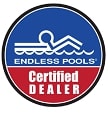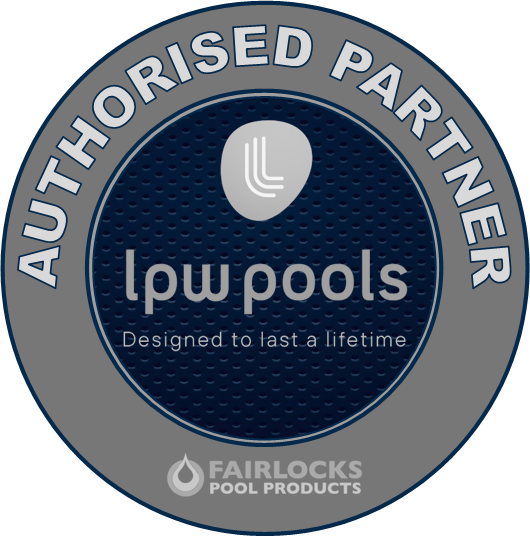 Pink Slime is an unsightly and unwelcome form of bacteria, which also happens to be really stubborn and tricky to remove, whilst White Water Mould is a naturally occurring form of fungus, equally as resistant to chemicals. Both these troublesome substances thrive in dark, damp locations – so they love hard to reach parts of swimming pools and hot tubs.
Pink Slime is an unsightly and unwelcome form of bacteria, which also happens to be really stubborn and tricky to remove, whilst White Water Mould is a naturally occurring form of fungus, equally as resistant to chemicals. Both these troublesome substances thrive in dark, damp locations – so they love hard to reach parts of swimming pools and hot tubs.
What Causes White Water Mould and Pink Slime?
Pink Slime (Serratia Marcescens) is an airborne bacterium, that appears as a pinky-orange substance commonly found in damp, humid environments that are difficult to access for thorough cleaning.
White Water Mould is a form of fungus that looks very similar to pieces of torn up tissue paper in the water.

Both Pink Slime and White Mould thrive in dark, moist areas where water circulation is poor - so they love the ‘hidden’ areas of a swimming pool, such as behind underwater lights and around the edge of swimming pool liners that are overhung with edging. Thankfully, they are not as commonly found in spas, due to the more rapid water movement.
A number of Endless Pools owners have noticed pink slime and white-water mould formation under the bench. This is partly due to that particular area of the pool being tricky to access, making it hard to reach when cleaning the pool. Also, even if there are sufficient levels of chlorine in the water when testing, the chlorine can struggle to reach this part of the pool, making it a vulnerable area for white mould and pink slime to form.
Are They Harmful?
Although not considered as hazardous to your health as other forms of bacteria and mould (such as black mould), pink slime and white-water mould have been associated with some unpleasant conditions including respiratory and urinary infections. It is therefore important to treat them as soon as possible once present, and to take the necessary precautions to minimise the recurrence of these pesky substances.
How Do I Remove Pink Slime and White-Water Mould?
Once spotted in the swimming pool environment, swift and thorough action is important for effective removal:
- Firstly, clean all surfaces thoroughly to remove the visible slime.
- Using an un-stabilised chlorine, shock dose the pool to kill off the bacteria.
- Adding a dose of algaecide is also recommended at this stage.
 Next, add a water clarifier, which will aid in the removal of the fine particles of dead-bacteria that will be suspended in the water following the shock process.
Next, add a water clarifier, which will aid in the removal of the fine particles of dead-bacteria that will be suspended in the water following the shock process.- Run your circulation pump and filter continuously until the water runs clear again, then backwash the filter as normal.
- Once these steps have been carried out, thoroughly clean and rinse off all the cleaning equipment used (hoses, vacuum and brush heads) so they are free from bacteria going forward.
Prevention is easier than the cure. Follow these best practice guidelines to keep your pool water safe and sparkling;
Chemicals and Water Balance
Keeping your pool water sanitiser within the correct range will help keep bacteria, mould and algae at bay, so this is a vital step to maintaining safe and clean water.
It is also good practice to maintain proper water balance overall, by regularly checking and balancing the pH level, Total Alkalinity and Calcium Hardness.
The ideal ranges for swimming pool and spa water are:
Chlorine:
Pools; 1 – 1.5 mg/l (or ppm, parts per million)
Hot Tubs; 3 – 5mg/l or ppm
pH: 7.4 – 7.6
Total Alkalinity: 80 – 120 mg/l or ppm
Calcium Hardness: 175 - 500 mg/l or ppm
Cyanuric Acid (Stabiliser): 30 – 60 mg/l or ppm
The circulation pump and filter should be on for at least 12 hours per day to ensure adequate circulation and filtration of the pool water, for removal of debris and to prevent stagnant water (as mould and bacteria love stagnant water!).
Cleaning and Maintenance
Aside from treating the pool water with chemicals, giving the pool surfaces a weekly thorough clean will minimise the growth of bacteria and algae. Using a good quality pool brush, scrub the floor, walls, steps or ladder and the surrounding area.
You should also carefully clean your pool cover (using only products designed for the cover type) and any pool inflatables or loungers – along with any accessories you use in the pool. This will help prevent any additional bacteria entering the pool.
An excellent preventative measure in addition to the above steps is to apply a long-life algaecide to help prevent algae growth, which can be effective for up to six months.
All Swim stock a wide range of Chemicals, Cleaning & Maintenance products and equipment to ensure you have everything you need to maintain your swimming pool and hot tub and can provide advice on any issues that crop up.
If you are struggling with anything to do with pool or spa maintenance, give us a call on 029 2070 5059 or email sales@allswimltd.com.































































































